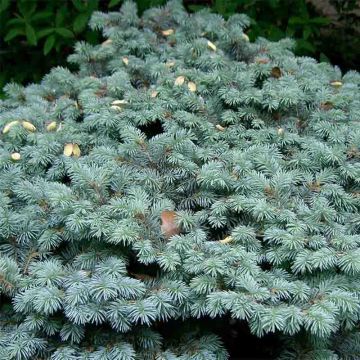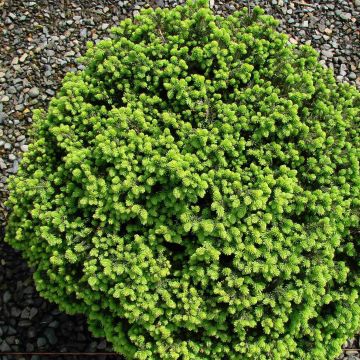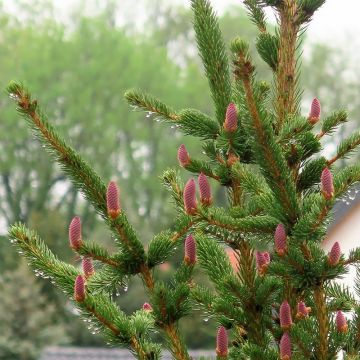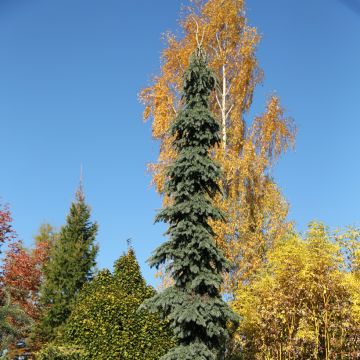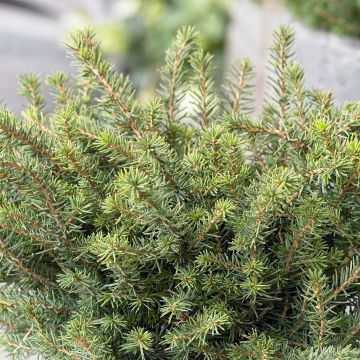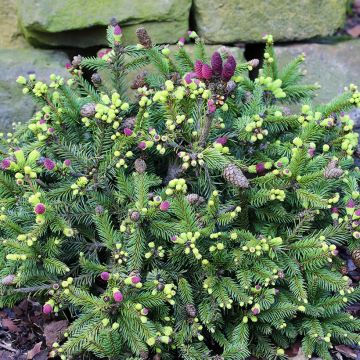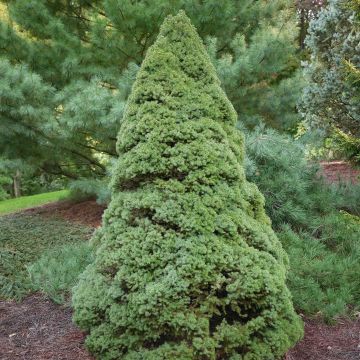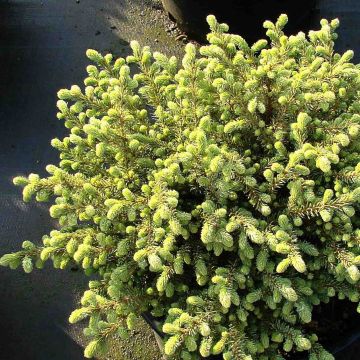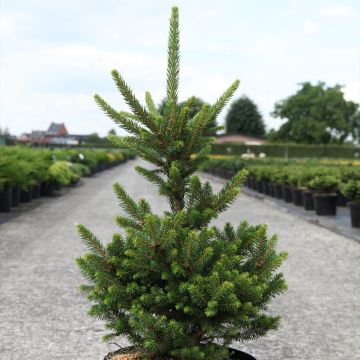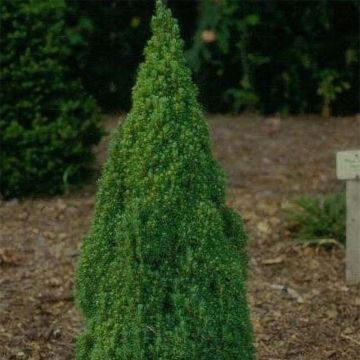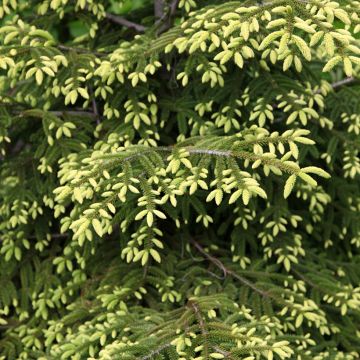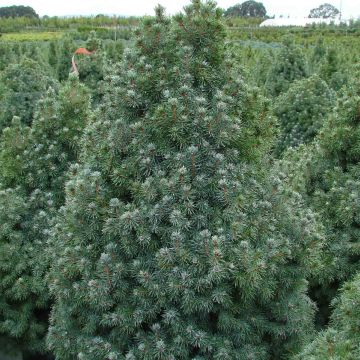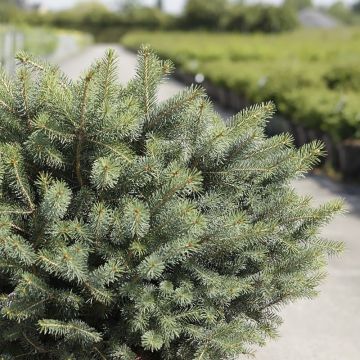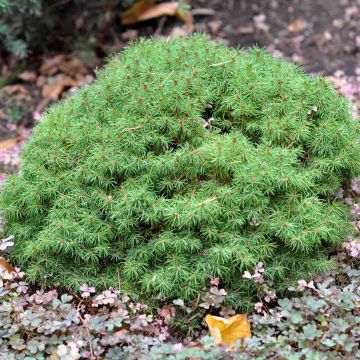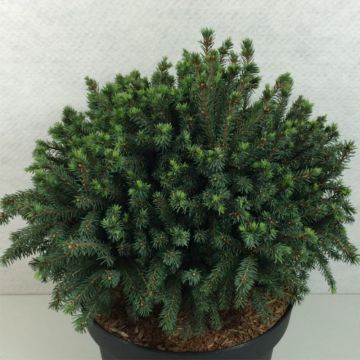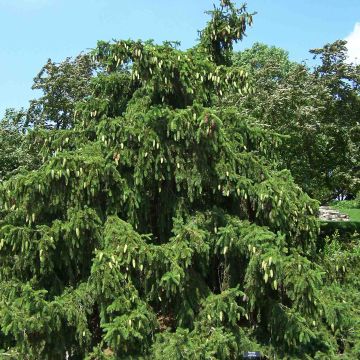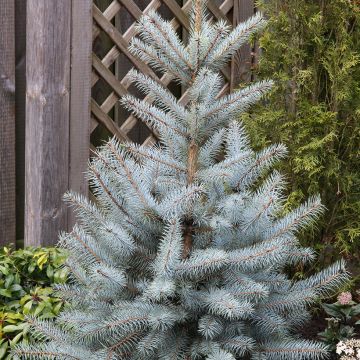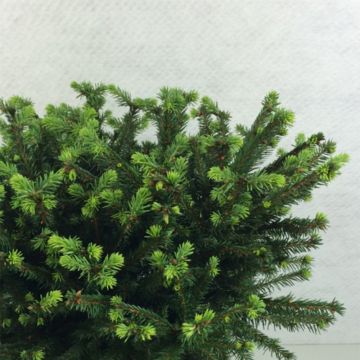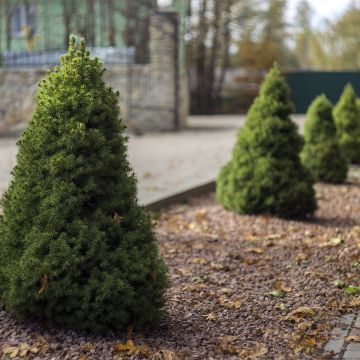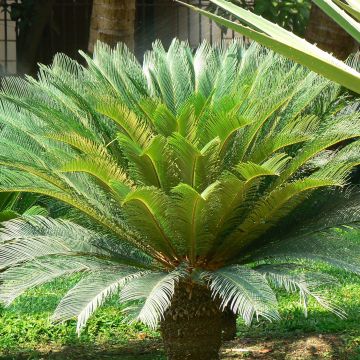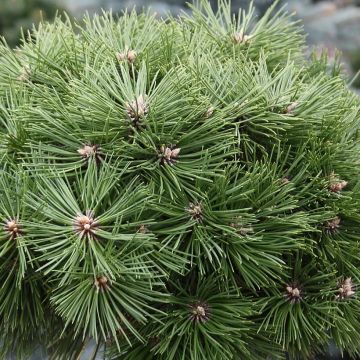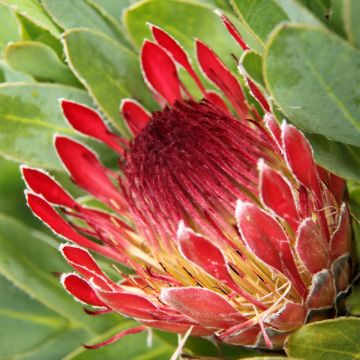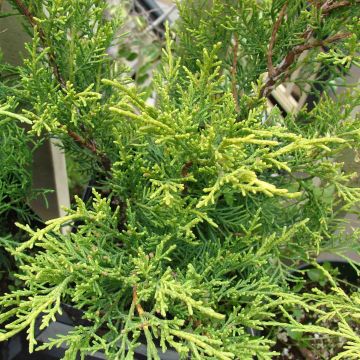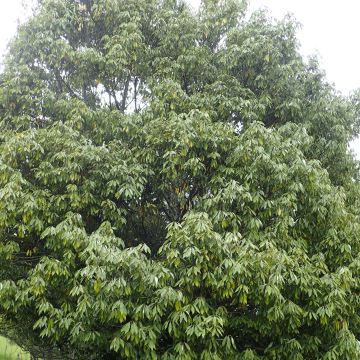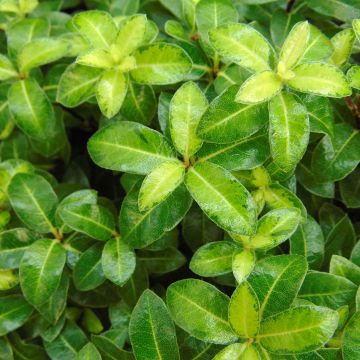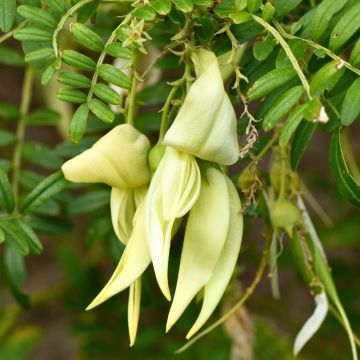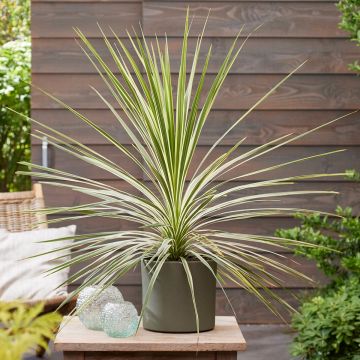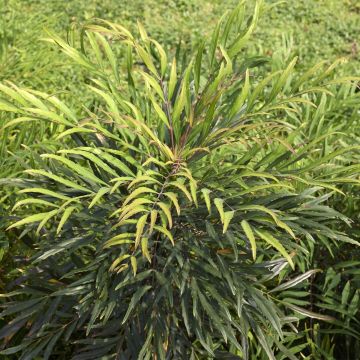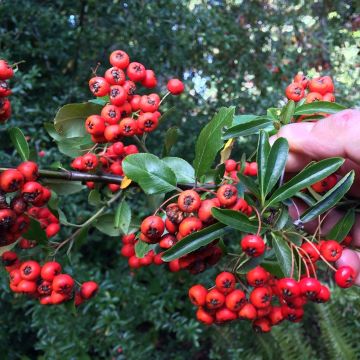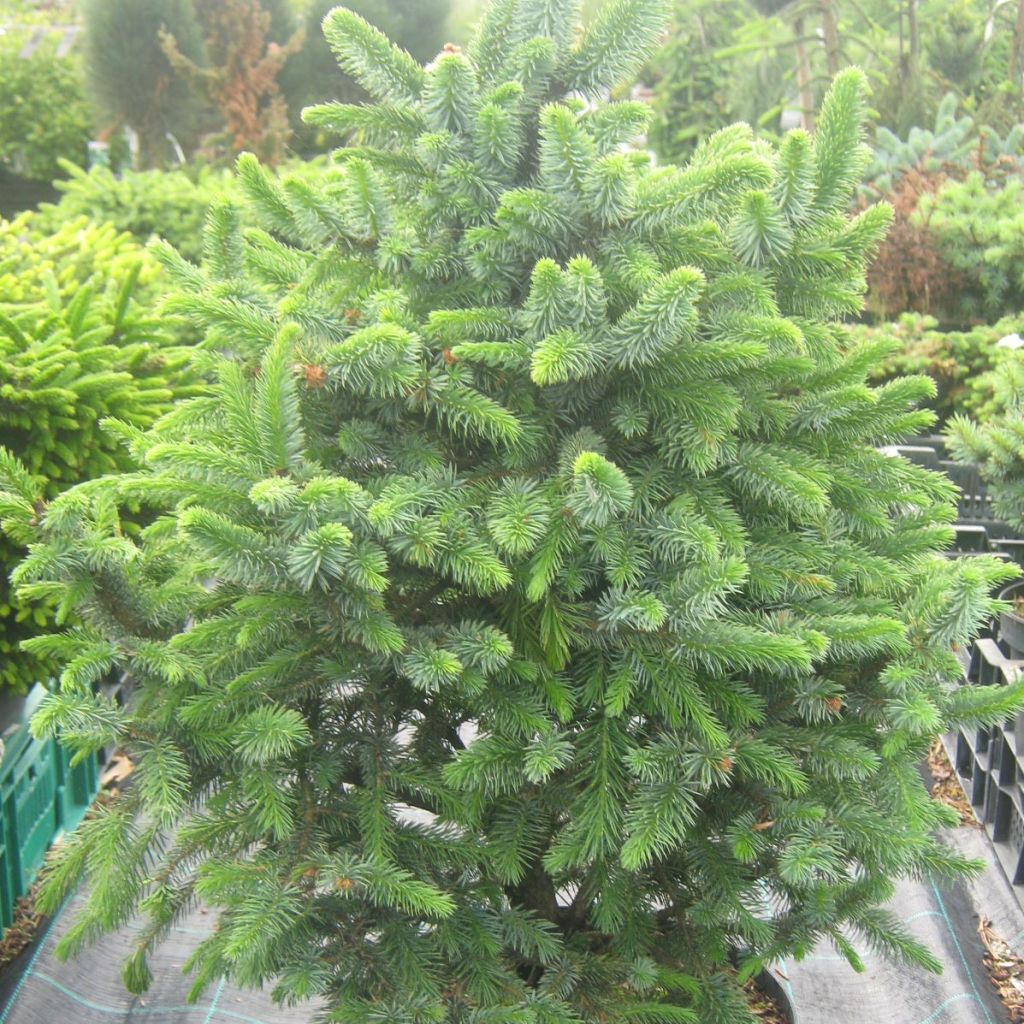

Picea sitchensis Sugarloaf - Epicea de Sitka
Picea sitchensis Sugarloaf - Sitka Spruce
Picea sitchensis Sugarloaf
Sitka Spruce
Why not try an alternative variety in stock?
View all →This plant carries a 24 months recovery warranty
More information
We guarantee the quality of our plants for a full growing cycle, and will replace at our expense any plant that fails to recover under normal climatic and planting conditions.
From €5.90 for pickup delivery and €6.90 for home delivery
Express home delivery from €8.90.
Does this plant fit my garden?
Set up your Plantfit profile →
Description
Picea sitchensis 'Sugarloaf' is a dwarf form of the Sitka spruce, quite whimsical, which forms over time a pyramidal and compact bush, wider than it is tall, very attractive. In spring, the tips of its branches are adorned with very dense and slightly twisted young shoots that play with the light, exhibiting the icy bright blue underside of their emerald green needles. Its very neat silhouette fits well in small gardens, enlivens large rockeries, and works wonders in pots on the terrace. It is a very hardy, undemanding small conifer that does not require pruning. It thrives in a moist, not too chalky soil, and in a sunny exposure.
Picea sitchensis, also known as the Sitka spruce, is a conifer of the Pinaceae family native to the west coast of the United States, named after the locality of Sitka, located in Alaska. It is a very hardy species, accustomed to cold and humid climates in summer. In its natural environment, which is often very harsh, this fast-growing tree exceeds 40m (131ft) in height, and shows a pyramidal habit with age and whorled branches. This spruce is one of the few that can be transplanted at a young age. It is very tolerant of soil pH.
The 'Sugarloaf' variety is a rare variety in our gardens, discovered on Mount 'Pain de Sucre' located in Oregon, United States. It is distinguished from the wild species by its very small size and its flattened pyramidal to conical habit, and by its unusual young shoots. This bush shows regular and particularly dense vegetation. Its growth is slow, around 7cm (3in) per year. A 20-year-old specimen will not exceed 1.20m (4ft) in width and 1.80m (6ft) in spread at the base. Its thin and stiff branches are highly branched at their tips, very tight, horizontal to slightly trailing. They are covered with fine, flat and stiff needles, arranged radially around the branches. The young shoots end in a slight twist that reveals the bluish and silvery underside of the needles.
The dwarf Sitka spruce 'Sugarloaf' deserves to be better known and planted in gardens, even the smallest ones. With its ease of cultivation in cool climates, its anything but boring personality, and its very compact growth, it is a perfect plant for rockeries, flower beds, and terraces. This plant goes well with large stones, the geometric lines of swimming pools, and masonry works. It can be associated with complementary grasses or dwarf conifers with a trailing habit (Juniperus horizontalis 'Blue Chip'), globose habit (Picea abies 'Little Gem'), or columnar habit (Juniperus communis 'Sentinel'). The real graphic qualities of conifers naturally impose themselves in the design of a contemporary garden, which prefers the aesthetics of forms, silhouettes, and textures to the dance of flowering. These plants, with their reassuring permanence, structurally and durably shape a flower bed, mark pathways, border the terrace, easily replacing the strong presence of trimmed boxwood or holly. The key is to play with volumes and colours.
Report an error about the product description
Picea sitchensis Sugarloaf - Sitka Spruce in pictures
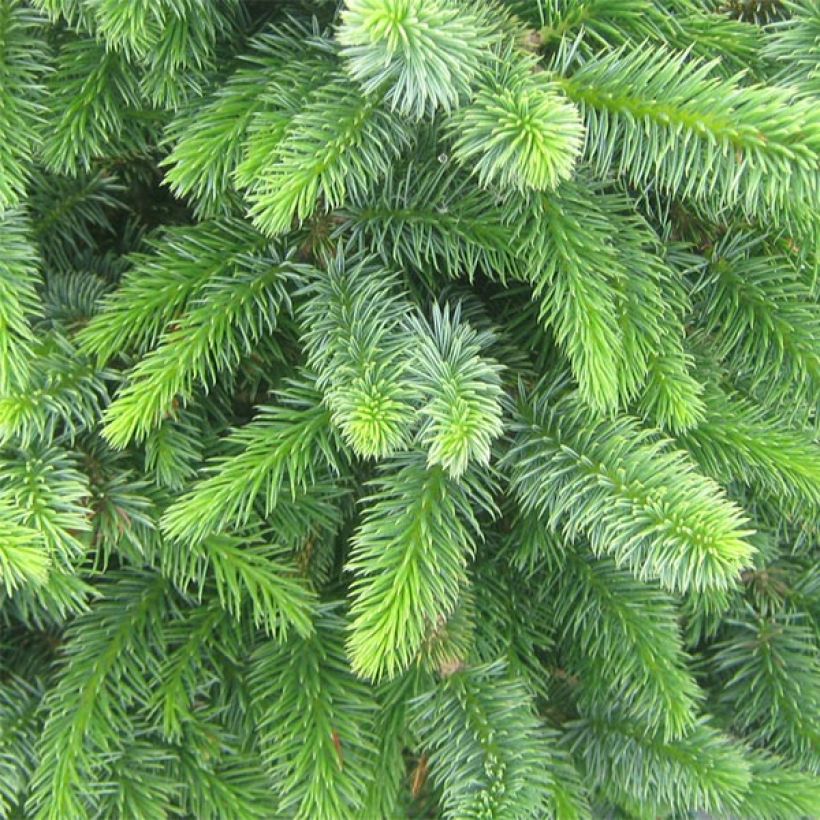

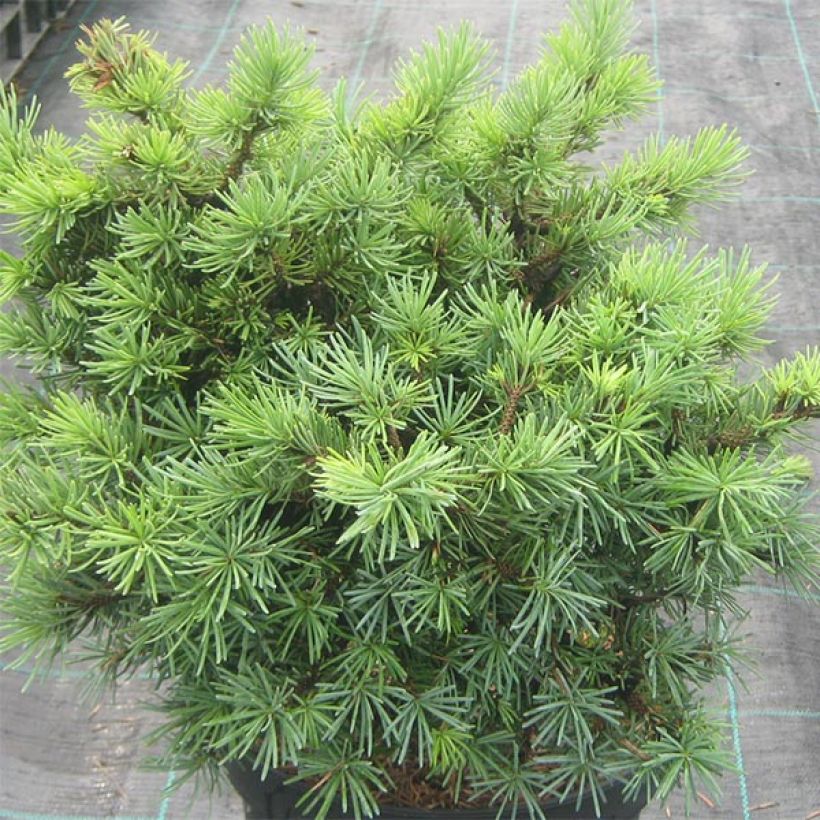

Plant habit
Foliage
Botanical data
Picea
sitchensis
Sugarloaf
Pinaceae
Sitka Spruce
Cultivar or hybrid
Other Picea
Planting and care
Picea sitchensis 'Sugarloaf' is planted from September to November and from February to June in ordinary, well-drained, moist to wet, rather fertile, even slightly calcareous, neutral or acidic soil. A sandy, humus-rich or loamy soil will be perfectly suitable. Choose a sunny location or, at most, partially shaded. Soak the root balls well before planting. Add organic amendment at planting and water generously in the first years, and in case of prolonged drought. Apply a special conifer fertilizer every year in April and cultivate the soil in summer. This very hardy conifer (up to -30°C (1°F) at least) tolerates salty soils, but fears heat and drought. Pruning is not necessary.
Planting period
Intended location
Care
This item has not been reviewed yet - be the first to leave a review about it.
Evergreen shrubs
Haven't found what you were looking for?
Hardiness is the lowest winter temperature a plant can endure without suffering serious damage or even dying. However, hardiness is affected by location (a sheltered area, such as a patio), protection (winter cover) and soil type (hardiness is improved by well-drained soil).

Photo Sharing Terms & Conditions
In order to encourage gardeners to interact and share their experiences, Promesse de fleurs offers various media enabling content to be uploaded onto its Site - in particular via the ‘Photo sharing’ module.
The User agrees to refrain from:
- Posting any content that is illegal, prejudicial, insulting, racist, inciteful to hatred, revisionist, contrary to public decency, that infringes on privacy or on the privacy rights of third parties, in particular the publicity rights of persons and goods, intellectual property rights, or the right to privacy.
- Submitting content on behalf of a third party;
- Impersonate the identity of a third party and/or publish any personal information about a third party;
In general, the User undertakes to refrain from any unethical behaviour.
All Content (in particular text, comments, files, images, photos, videos, creative works, etc.), which may be subject to property or intellectual property rights, image or other private rights, shall remain the property of the User, subject to the limited rights granted by the terms of the licence granted by Promesse de fleurs as stated below. Users are at liberty to publish or not to publish such Content on the Site, notably via the ‘Photo Sharing’ facility, and accept that this Content shall be made public and freely accessible, notably on the Internet.
Users further acknowledge, undertake to have ,and guarantee that they hold all necessary rights and permissions to publish such material on the Site, in particular with regard to the legislation in force pertaining to any privacy, property, intellectual property, image, or contractual rights, or rights of any other nature. By publishing such Content on the Site, Users acknowledge accepting full liability as publishers of the Content within the meaning of the law, and grant Promesse de fleurs, free of charge, an inclusive, worldwide licence for the said Content for the entire duration of its publication, including all reproduction, representation, up/downloading, displaying, performing, transmission, and storage rights.
Users also grant permission for their name to be linked to the Content and accept that this link may not always be made available.
By engaging in posting material, Users consent to their Content becoming automatically accessible on the Internet, in particular on other sites and/or blogs and/or web pages of the Promesse de fleurs site, including in particular social pages and the Promesse de fleurs catalogue.
Users may secure the removal of entrusted content free of charge by issuing a simple request via our contact form.
The flowering period indicated on our website applies to countries and regions located in USDA zone 8 (France, the United Kingdom, Ireland, the Netherlands, etc.)
It will vary according to where you live:
- In zones 9 to 10 (Italy, Spain, Greece, etc.), flowering will occur about 2 to 4 weeks earlier.
- In zones 6 to 7 (Germany, Poland, Slovenia, and lower mountainous regions), flowering will be delayed by 2 to 3 weeks.
- In zone 5 (Central Europe, Scandinavia), blooming will be delayed by 3 to 5 weeks.
In temperate climates, pruning of spring-flowering shrubs (forsythia, spireas, etc.) should be done just after flowering.
Pruning of summer-flowering shrubs (Indian Lilac, Perovskia, etc.) can be done in winter or spring.
In cold regions as well as with frost-sensitive plants, avoid pruning too early when severe frosts may still occur.
The planting period indicated on our website applies to countries and regions located in USDA zone 8 (France, United Kingdom, Ireland, Netherlands).
It will vary according to where you live:
- In Mediterranean zones (Marseille, Madrid, Milan, etc.), autumn and winter are the best planting periods.
- In continental zones (Strasbourg, Munich, Vienna, etc.), delay planting by 2 to 3 weeks in spring and bring it forward by 2 to 4 weeks in autumn.
- In mountainous regions (the Alps, Pyrenees, Carpathians, etc.), it is best to plant in late spring (May-June) or late summer (August-September).
The harvesting period indicated on our website applies to countries and regions in USDA zone 8 (France, England, Ireland, the Netherlands).
In colder areas (Scandinavia, Poland, Austria...) fruit and vegetable harvests are likely to be delayed by 3-4 weeks.
In warmer areas (Italy, Spain, Greece, etc.), harvesting will probably take place earlier, depending on weather conditions.
The sowing periods indicated on our website apply to countries and regions within USDA Zone 8 (France, UK, Ireland, Netherlands).
In colder areas (Scandinavia, Poland, Austria...), delay any outdoor sowing by 3-4 weeks, or sow under glass.
In warmer climes (Italy, Spain, Greece, etc.), bring outdoor sowing forward by a few weeks.


































